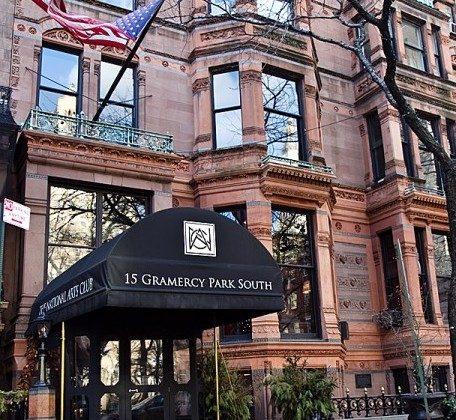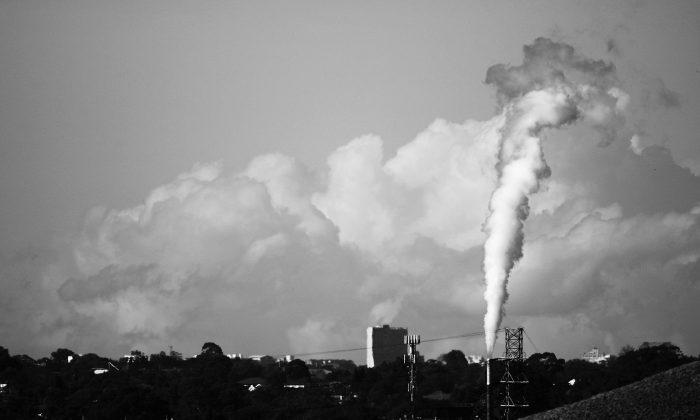Built: 1881–1884
Architect: Calvert Vaux of Vaux & Radford
Location: 15 Gramercy Park South
Although it is a home designed with protection and a quick escape tunnel, 15 Gramercy Park South never served its intended purpose. Instead, it has been home to the National Arts Club for over a century.
In the Gramercy Park Historic District, 15 Gramercy Park remains a remnant of its time—resisting the quick ebb and flow of New York City.
“This district is today serene and coherent because it reflects the quietness of a park—and also of another century. It is an area in which the original beauty was so great that it has been able to resist … change which could have destroyed it,” reported the New York City Landmark Preservation Commission.
Designed by Calvert Vaux, the architecture is derived from the Gothic Revival or Victorian-Gothic movement—incepted in the late 18th century against the religious nonconformism. The dual-colored facade, brownstone and black granite trim, combined with the horizontal belt courses and pointed arch windows each of a different colored stone, makes this structure admirable.
“The structure is an impressive expression of Victorian-Gothic architecture,” states a 1966 Landmark Preservation Commission report.
The bands of stone across the facade elegantly display leafy and seashell-like ornaments and busts of famous figures. Above an entrance and over the other busts is one of Michelangelo sculpted by Sergio Rossetti Morosini, which adds to the Gothic Revival style.
Architect Calvert Vaux, trained by Cottingham—a leader of the Gothic Revival movement—later became renowned for his Gothic Revival inspired works. Such works are visible from the facades of both the American Museum of Natural History and the Metropolitan Museum of Art. He is perhaps most known for his role in designing Central Park in 1857.
Samuel Tilden, governor of New York in 1874–1875 and presidential candidate in 1876 who won the popular vote but lost in the Electoral College, initially resided here. Unsteady times in New York pushed Tilden to take measures to protect himself. Workers installed rolling steel doors behind the windows and a tunnel to 19th Street for a quick escape out of fear of riots.
Since 1906, the structure has been host to the National Arts Club. It aims to stimulate, foster, and promote public interest in the arts and has attracted membership from many distinguished persons, including three presidents—Roosevelt, Wilson, and Eisenhower.
A rich history housed within an impressive structure led to it being landmarked by the New York City Landmark Preservation Commission in 1966 and declared a National Historic Landmark in 1976.









Friends Read Free